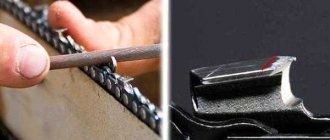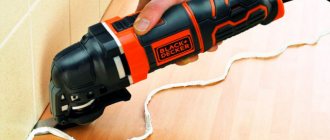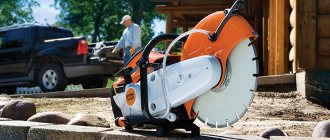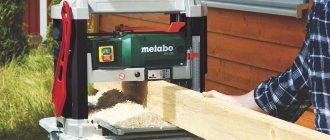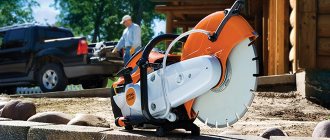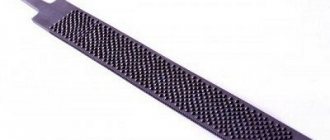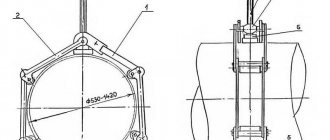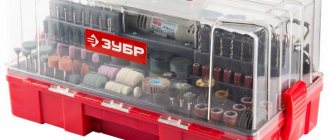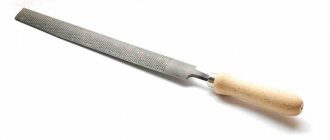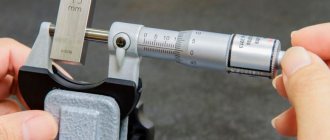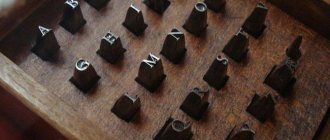General description and purpose of the file
The purpose of the tool is to refine the part to its final form. With its help, many different production operations are performed manually:
- Sharpening of all kinds of tools - saws for wood and metal with different tooth profiles, knives, scrapers, hole punches, punches.
- Initial processing of metal, wood and plastic products.
- Removing burrs after rough filing, grinding the surface.
- Adjusting the shape of an object, molding holes.
- Making elements of a complex configuration on a product, such as grooves, grooves, splines, ovals.
- Cutting off part of a part.
- Adjustment of dimensions according to the drawing.
Rasp and its difference from a file
Despite its rough appearance, the rasp is intended exclusively for working on soft metals, as well as wood, plastic, rubber and leather. A rasp differs from a file not only in its larger size, but also in the type of notch - point. It is through the use of a pinpoint cut with high roughness that it is possible to achieve high efficiency in processing materials.
These tools come in different shapes (flat, round and semicircular) and sizes, and they are often used not for grinding, but for roughing materials. For their manufacture, steel grades U8, U10 and U7 are used. Despite the great similarity with a file, a rasp differs from it not only in external features, but also in purpose.
Tool structure
A mechanic's file, consisting of only two parts, is the main assistant of a mechanic. It is extremely simple in design. The device of the tool can be represented in the form of two parts: the first, sometimes called the “blade,” does the main work, and the shank, on which the handle, machined from wood or plastic, is attached. The working part includes:
- front end - toe;
- side face - edge;
- working area – edge;
- the section of the edge without a notch is the heel.
The main part turns into a narrow, conical shank, onto which a wooden handle is mounted. To prevent it from splitting when inserted, a metal ring is tightly placed on it. As a result, we can say that the tool consists of a working fluid and a handle.
In addition to hand files, there are mechanized ones. Their working surface is made in the form of a ring of abrasive tape, and the drive is either electric or pneumatic. Moreover, cordless electric files are completely autonomous; you can work with them in any hard-to-reach places.
Appearance and shapes of files
Externally, it is a multi-bladed block consisting of a metal strip with sharp teeth of various angles.
Typically, the main elements of a file are the blade and the shank for attaching the handle.
According to the shape of the work area, tools can be:
- in the form of a flat rectangle;
- round;
- semicircular;
- oval;
- rhombic;
- in the form of an equilateral or obtuse triangle.
Some varieties are produced without a shank, while other types use an extension of the steel blade as a handle.
As a rule, the length of the working blade ranges from 100 to 400 mm.
Some types, taking into account the specifics, are produced in large sizes.
This is interesting: Choosing an angle grinder Ushm for home, cottage and construction sites: what is important is power or speed? Tips for use
Marking
The produced file must be marked. The marking is an image of the necessary information about the characteristics of the tool. The marking includes a class designation from 1 to 6; length indicated by the letter L; type of notch with numbers from 0 to 5. The last indicator is considered the most important by practitioners; it determines the choice of the right tool in a particular situation.
The tooth hardness indicator is designated by the letters HRC and two numbers - for example, HRC 55. The type of steel is designated as 13X or U13A.
Classification of files
There are different types of files. These devices are divided according to several factors:
- type of notches;
- the form of the device for working with workpieces;
- purpose.
Each of the groups presented should be discussed in more detail.
In the understanding of people not involved in metalworking, a device designed for grinding metal workpieces is a tool consisting of a working rectangular part, which is connected to a handle. There are notches on the metal rectangle. They remove part of the metal when transferring forces. However, there are different forms of the working part.
The file cannot be made of soft materials. The steel used for them must be harder than the surfaces being processed.
File notches play a direct role when working with different materials. To apply them to the working surface of the tool, several technological operations are used - turning, milling, notching, drawing, cutting.
Types of file notches:
- Single - designed for working with soft materials: alloys of non-ferrous metals, wood and plastic.
- Double - represent additional and main notches. The additional one is adjacent to the main one at an angle. This design allows you to work with hard materials. This is due to the fact that two notches remove a layer of material while crushing the emerging chips.
Tools are classified by tooth size. This indicator depends on how many notches are present on the working part. The fewer there are, the larger the tooth is made. There are 5 tooth size numbers:
- Numbers 0, 1 - used for rough processing of metal surfaces. The teeth are the largest, allowing you to quickly remove a lot of material in a short period of time. The disadvantage of such devices is low processing accuracy.
- Sizes 2.3 - used when you need to clear a layer down to 0.06 mm.
- Sizes 4, 5 - used for finishing parts. A small layer of material is removed, which allows for precise operations and bringing the workpiece to the required dimensions.
It is advisable to have all the numbers in order to gradually process the work surface.
According to their intended purpose, the following types of files are distinguished:
- General purpose hand tools. Used in plumbing work. Double notch. The size of the teeth is selected depending on the required quality of processing.
- Special purpose devices. They are used in metalworking factories. With their help, defects remaining after processing workpieces by machines are corrected. Withstands long-term active use.
- Needle files are the most common group, which consists of 11 subgroups of models of different shapes. They have number five notches and are small in size. Needle files are used for precise processing of parts.
- Rasps are long-length models with large teeth. Used for rough metal processing.
You need to choose a device based on its size, shape, and size of teeth.
Metal files are classified depending on their shape. The following types of instruments exist:
- Flat - the classic form of devices for processing metal surfaces.
- Triangular - they are used to bore grooves, grooves, and holes.
- Square - used when working with holes of complex shape.
- Semicircular tools - they are used to bore large diameter holes.
- Round - used for boring oval round holes of different diameters.
- Diamond-shaped - process the teeth of parts, gears, and equipment.
Purpose of files
- Flat files allow you to process internal and external surfaces of flat and convex shapes with the highest quality.
- Square ones are designed for grinding grooves and holes of rectangular and square shapes. This tool also has another name - whittling. Its standard length is 50 cm. It is most advisable to use it when it is necessary to remove a metal layer of more than 1 mm.
- The triangular file is designed for grinding grooves and holes, grooves and internal corners.
- Using a round one, you can process concave-shaped surfaces. It is most often used for grinding oval and round holes.
- The main purpose of special files is grinding toothed and inclined surfaces, as well as corners. They allow you to select grooves and narrow grooves.
- The largest teeth have brute files, and they are used for preliminary surface treatment, since they can quickly remove a fairly thick layer - from 0.05 to 0.1 mm. But these files have a big drawback that needs to be mentioned - low accuracy. Therefore, after processing, the working surface takes on a rough appearance.
- Personal files are used for finishing sanding. They allow you to remove a layer with a thickness of 0.02 to 0.06 mm.
- Using velvet tools, the final polishing of the products is performed. They allow you to remove a layer with a thickness of 0.01 to 0.03 mm in one pass. The advantage of this tool is its high processing accuracy - 0.01 - 0.005 mm.
Using files
Different shapes need to be used for certain parts. The classic flat model is used when you need to sand smooth surfaces. Triangular machines process grooves and grooves. Work is performed at an angle. Square - holes of different shapes. The bumps are ground into semicircular shapes and the grooves are leveled.
Metal files are considered a universal tool that is used for processing parts of various shapes. The variety of shapes, sizes of devices, and tooth sizes allows you to expand their scope of application.
File tooth sizes
Bench files are manufactured in compliance with the GOST 1465-59 standard. The standard provides for the division of files into types according to their cut. First, let's look at the issue of differences between files based on the size of the teeth. There are a total of 5 notch sizes:
- 0 and 1 are the tools that have the largest teeth, allowing them to be used for rough surface finishing. The large size of the teeth makes it possible to quickly remove a layer of metal in a short time interval. Among the disadvantages, it should be noted not only the low processing accuracy, but also the inability to use the device for working with hard metals. The main distinctive feature of such devices is that there are from 4 to 12 teeth per 10 mm distance
- 2 and 3 - a group of files with medium-sized teeth. Such tools are used if it is necessary to remove a layer of metal up to 0.06 mm. You can determine whether a file belongs to types 2 and 3 by the number of teeth per 10 mm (from 13 to 24 teeth)
- 4 and 5 are the smallest teeth, through which the finishing of parts is carried out. With their help, a small layer of metal is removed, allowing the workpiece to be brought to the required size. The number of teeth per 10 mm is from 24 pieces and above
Table of file classes
Craftsmen have in their arsenal a full set of files with different numbers, which allows them to perform workpiece processing manipulations not only with high accuracy, but also with maximum efficiency. That is why it must be said that if you plan to process metal or wooden workpieces, then you need to buy a set of files with different tooth sizes. Only with a full set of tools can we talk about the quality of the work performed.
To indicate the size of the teeth, not only numbers are used, but also names. The sizes of teeth on files vary according to the following names:
- Brushed ones - correspond to numbers 0 and 1. In one pass, a large layer of soft metal is removed with a blade, and their main task is rough processing
- Personal files - have up to 24 teeth, and correspond to numbers 2 and 3. Personal files are the most popular ones used in practice. Personal devices have a significant drawback - clogging of the grooves with metal dust. To increase the effectiveness of the tool, the working part of the metal base must be regularly cleaned with a metal brush
- Velvet - have the smallest teeth, the number of which is over 25 per 10 mm. The maximum number of grooves per 10 mm is 80, which allows for finishing processing
One of the equally important questions is about what types of files are shaped and for what purposes they are used. It is this issue that we will look into in more detail.
Kinds
Classification of files can be carried out according to a large number of characteristics. The most important feature is the type of notches. This moment determines what type of work can be carried out and how the layer will be removed from the surface. When making tools, files are guided by GOST 1465-59. The type of notch allows you to solve a certain range of problems; there are several options:
- simple;
- transverse or double notch;
- rasp or point;
- arc.
It is difficult to visually distinguish the type of notches, but you can accurately determine the type based on the manufacturer’s description or the applied markings. Some varieties are designed for specific tasks.
Additional classification concerns sizes. According to GOST 1465-59, 6 numbers are allocated.
- Large ones numbered 0 and 1 are used for rough surface treatment. When used correctly, a layer of up to 0.1 mm can be removed in one pass. Cannot be used for precision machining. Careless handling of the tool causes the teeth to break off from the surface.
- By using tools with 2 and 3 notches, greater accuracy can be achieved. Removes up to 0.06 mm in one pass. A high class of roughness cannot be achieved.
- The finishing pass is carried out with a tool with notches 4 and 5. This option is suitable for final adjustment of the degree of surface roughness, but not for changing the dimensions of the product.
READ What is a clamp?
The information above indicates that a file can be used for a wide variety of jobs. The tool is unpretentious, but it must be chosen correctly depending on the task at hand.
Single notch
The simplest option is with a single notch. A special feature of the processing procedure for soft metals and plastics is the rapid filling of the space between the cutting elements. It is very difficult to clean the grooves.
It is the single notch that allows you to work for a long period. At the same time, there are no serious difficulties with cleaning the surface.
The working part, as a rule, is made of softer, inexpensive metal.
With cross section
The double cut design is effective when working with hard alloys, such as cast iron or bronze. This cutting edge arrangement ensures high productivity.
The chips that form from hard metal do not clog the grooves. Therefore, cutting down the surface can be carried out over a long period.
Dot notch
This option is always large. Large notches allow you to work with rubber, wood, leather and other similar materials.
It is worth considering that as the size of the cutting edge increases, the quality of the machined surface decreases significantly.
This option is not suitable for obtaining a smooth surface during finishing.
general information
A file is usually called a product that contains two elements:
- Steel bar . Its surface is intended for notches applied in production using special templates. There are several types of notches, among which the most common are rectangular, triangular and round.
- Handle . It is secured to the tool with a clamping ring and is necessary to prevent cracks. It is fastened to a cone-shaped shank. With the help of a handle, which can be made of plastic or wood, more convenient conditions for working with a file are provided. In case of breakdown, replacing it will not be difficult. This element is most often made from beech, birch and pressed paper. The handle should be one and a half times longer than the shank.
Files may differ from each other in their sizes. So, on sale you can find instruments with a length of 9, 10, 11, 12, 13 and 14 cm. They can also differ in diameter, which can be 12, 16, 20, 23, 25 and 28 mm.
All files belong to the category of cutting tools. Their main purpose is to give the processed products certain sizes and shapes. The operation of the tool is based on the principle of layer-by-layer grinding of the surface .
Materials
These devices for grinding metal products are most often made of very hard, high-quality tool steel:
- Brands ШХ15 or 13Х. This is the designation for alloy chromium steel.
- U10A or U13A. Marking indicates the use of improved unalloyed steel.
During the manufacturing process, files must undergo a hardening procedure, which allows them to be provided with a hardness level of 54-58 HRC. Tools intended for processing metal products are made from steel of the indicated grades. If you need to grind wood and other materials, then use tools made of softer steel.
This is interesting: How to choose the most correct and durable grill
Forms
Another, no less important classification concerns the shape of the working surface. It is selected depending on the characteristics of the product being processed. The following varieties are distinguished.
- Flat ones are the most widely used, as they are intended for processing ordinary surfaces, such as tiles.
- Round ones are suitable for working with internal holes. The working part is made in the form of a rod, which tapers from the end surface.
- Semicircular ones can be called the most versatile offer.
- Triangular ones are used to work with grooves and edges. The resulting edge has teeth that process the surface.
- Square ones allow you to apply more force, since the working part maintains the required rigidity even during long-term operation.
- Special ones are produced for processing certain products and may have a specific working part.
- Hacksaws can be used for sharpening products.
- Diamond-shaped ones are designed for working with complex edges.
The shape determines which surface can be processed.
Types of tools by shape
Since the processed products may differ from each other in shape, for the most effective processing, manufacturers produce appropriate types of grinding devices. The special shape of the profile allows this tool to perform the most high-quality grinding of parts. Depending on this characteristic, several types of files can be distinguished:
- oval;
- diamond-shaped;
- hacksaw;
- special;
- semicircular;
- round;
- trihedral;
- square;
- flat.
Thus, there are many tools for processing products, and each of them differs not only in design, but also in purpose.
Making files
Manufacturing consists mainly of the following operations:
- cutting blanks,
- forging the tail and tip of the file,
- annealing,
- editing (straightening),
- turning, or grinding, planes,
- filing for personal and velvet files,
- chamfering,
- hen, or cutting, teeth,
- sock trimming,
- dressing (toe sharpening),
- hardening,
- cleaning,
- tail release,
- lubricant
- package.
File steel
The material for files is carbon steel containing 0.8-1.5% C; 0.10-0.30% Si; 0.25—0.45% MP; <0.04% S and <0.05% P. Carbon steel containing 0.7% C is used for the manufacture of rasps.
Some types, especially velvet and special purpose for working on metal after heat treatment, are made from alloy steel with a chromium additive from 0.3 to 0.7%. The carbon content in steel increases, the smaller the size of the file being produced.
Steel for manufacturing comes in the form of strips of a certain profile and size in accordance with the profile and size. Hardness of steel d.b. not higher than 300 according to Brinell. The first operation - cutting off blanks - is usually carried out on shear presses, and several blanks are cut simultaneously, the number of which depends on the cross-sectional dimensions of the rods being cut.
The next operation is to forge the tip of the file (its end part). This operation is carried out either on a driven spring hammer with a weight of the falling part (shaft) from 15 to 45, depending on the cross-sectional dimensions of the file being forged, or in strikers with grooves corresponding to the cross-section and size of the part being forged. It is more rational to forge flat, triangular and semicircular parts on forging rollers, which gives a smoother surface of the forged part. Heating before forging is carried out in spectacle-type flame furnaces, operating both on oil and coal.
A diagram of testing a number of files on Herbert machines is shown in Fig. 19, it depicts the volume of sawn material as a function of the number of file strokes; Thus, the height of the rise of each individual curve of a given file before it transitions to the horizontal direction (which indicates the final dullness of the file) characterizes the durability of the files, and the tangent of the angle of inclination of the curve to the horizontal axis is proportional to the sharpness.
It should be noted, however, that the test results on the Herbert machine are only comparable to each other when the tested files are under absolutely identical conditions, both in terms of the notch pitch of the pressing weight, and in the sense of the uniform structure and hardness of the test bars.
What types of files are classified into according to their purpose?
Depending on the scope of application, files are divided into 5 main groups:
- Locksmith
- Machine or belt type
- Special
- Files
- Rasps
Each type of tool has its own characteristics, which are important to take into account in order to ensure high-quality processing of certain workpieces and parts.
- A metalworker's or hand file is the most popular type of working tool used in metalworking work. The notch on the devices has a double appearance, and the size of the teeth must be selected depending on the required quality of processing
- Tools for special purposes are used by craftsmen at enterprises and factories when performing metalworking work. Such instruments differ not only in size, but also in workmanship. With their help, craftsmen eliminate defects remaining after machining. The main requirement for special-purpose files is to withstand prolonged load during their operation.
- Needle files are a smaller type of file, which includes 11 varieties of shape. The notches on smaller models of tools are fine-grained, which allows them to be used for precision or finishing machining of parts.
- Rasps are an enlarged type of file, equipped with large teeth. Such devices are designed to perform rough metal processing
- Machine or belt - a separate group of tools for processing metal and wood, which differs not only in the method of application, but also in design. A band file is sandpaper in the form of a round strip. Such a tape is attached to an electrical device, while performing the corresponding work. Tape devices are an alternative to hand tools, but a number of disadvantages do not allow them to fully replace plumbing tools
It is necessary to choose files based not only on the shape, but also depending on the work being performed. Locksmith tools are universal and are suitable for performing various actions with metal and wooden workpieces.
Features and types of instruments
A tool that grinds down a surface layer by layer. Outwardly, it resembles a block, but with a handle. Notches are applied to the working surface, which ensure uniform grinding of the base.
Locksmith
This is a universal tool that can be used for different types of bases. Mechanic's files, in turn, are divided into two types - general use or narrow purpose. The former are recommended for use both in production and at home. Tools for narrow purposes are used for turning grooves, curved bases, non-ferrous metals and non-metallic surfaces.
Files
Products that are small in size and have small notches. They are recommended for use for processing small parts or surfaces in hard-to-reach places. There are two types of such tools - conventional and diamond-coated. The former are used for processing wood or metal, the latter – glass, ceramics, stone, etc. Needle files are mainly used in jewelry, engraving, etc.
Sharpening
These are highly specialized tools. The devices are recommended for use for sharpening saw chains, hacksaws, etc.
Rasps
This type of file has large teeth. This provides high productivity, but has a negative impact on the quality of work. The tool is recommended for use with non-metallic materials, namely plastic, stone, wood.
Types of files
According to their purpose, files are divided into several large groups:
- general purpose;
- special purpose;
- machine;
- rasps;
- files.
General purpose files are used for general metalworking work. The notching for instruments of this group is carried out using the notching method, equipping them with a double (cross) notch. They can be of different lengths (from 100 to 450 mm), have different bar shapes and almost all notch numbers.
Bench files for special work are used mainly in industrial settings, since their purpose is to eliminate large allowances when fitting grooves and different curvatures of surfaces; they can be used for processing non-ferrous metals. Depending on the work performed, they can be flat, lumber, grooved, double-ended and other shapes.
The most numerous group of needle files - there are as many as 11 types of them: flat, round, semicircular, square, triangular, oval, hacksaw, etc. Needle files can be distinguished by the short length of the bar (40, 60 or 80 mm) and the highest class 5 notch.
Types of files by shape.
Needle files are mostly equipped with a double notch, although the edges of flat files can also have a single notch. They are used primarily for processing small parts or bottlenecks that cannot be reached with conventional plumbing tools.
Rasps are divided into three types: shoe rasps, hoof rasps and general purpose rasps. Their distinctive feature is their long length (from 250 to 350 mm) and large notch teeth - for rasps it is never smaller than No. 1. Typically, rasps come in round or semi-circular shapes, as well as flat ones with blunt or sharp noses.
Numbering of notches on tools
Table for determining the notch number in relation to different section shapes
The size of the tooth on the surface depends on the density of the notches. The more there are, the smaller the teeth.
The classification of notches according to digital values from 0 to 5 is accepted. The largest teeth can remove up to 0.8...1.1 mm of metal. It is customary to assign the number “0” or “1” to such an instrument. Such an instrument was called “drachevy”.
Files that cut metal to a depth of 0.02...0.04 to 0.08...0.10 mm in one pass are numbered “2” or “3”. Such files are called “personal”.
If the tool removes 0.010...0.015 mm, then it is assigned the number “4” or “5”. They are called "velvet". When working with them, the highest processing quality and accuracy are obtained.
Typically, the notch is applied using the rolling method. The workpiece heated to the austenitic state is fed to the forming machine. The roller system rolls channels on the working surface of the tool.
The milling method is used to make personal and velvet files. The treatment is performed on workpieces before hardening.
Types of notches on tools and what they mean
The size of the notches on files is interconnected with such an important parameter as the length of the working part. Devices with large teeth are used when it is necessary to remove a large layer of metal. After this treatment, the surface becomes rough and therefore requires additional treatment before painting. To remove small amounts of metal, devices with fine notches are used. After carrying out the work with finely cut files, a better surface is obtained.
The notches or blades on the surface of the metal part of the tool come in different types. The most common classification of notches is by appearance. They come in double and single.
- Single - differ in that the lines on the surface of the metal workpiece are applied only in one direction. Tools with single or simple notches are used to work with soft metals, as well as wood, plastic, etc. The effectiveness of the use of devices is observed when sharpening hacksaws for wood
- Double or cross - as the name suggests, the notches on the device are applied in two directions, thereby forming a diamond-shaped figure between the lines. Double notching is highly efficient and also speeds up the work. The presence of two notches helps not only to remove the metal layer, but also to grind the chips into metal dust. Devices with this working profile are used for processing hard metals - cast iron, bronze and steel
In addition to single and double types of notches on files, there are other varieties. Few people know about this and what they are intended for, so let’s pay attention to this issue.
- Cross notches are the same as double notches. Some sources call it double or cross, while others use the name "cross". Many people know that a double notch consists of two crossed lines, but few know what angle they are at. The main notch is applied at an angle of 70-80 degrees, and the additional one has an angle of 55 degrees.
- Pointed - differ in that the notch has the shape of small burrs. This shape of the cutting parts is ideal when processing soft materials, more precisely wood, leather, rubber, etc.
- Arc milling is a special form of notching, through which high productivity is achieved with high-quality processing of materials. Files with this shape of the cutting part are used for working with non-ferrous metals and wood
In addition to the types of files based on the shape of the cutting part, they are also classified according to such criteria as the size of the notches or teeth. Tools are produced with different tooth sizes, but with mandatory compliance with the relevant standards.
This is interesting!
Did you know that you can make a knife from an old and unnecessary file? Instructions for making a knife from a file are described in detail in this material.
Subtleties of tool selection
Depending on the task to be performed, the size of the file, the features of the notches, the shape, and the length are selected. For example, for filing copper, bronze, brass, aluminum, other soft metals and wood, you should choose tools with a single cut. It is not recommended to use personal or velvet files for such work - their teeth become clogged with shavings too quickly and stop cutting. When choosing a notch number, you should proceed from the thickness of the layer being removed and the accuracy of processing.
READ How to make a carpentry workbench with your own hands
Let's look into this. Files with cut number 0 or 1 are used when 5-10 mm need to be filed, and the processing accuracy ranges from 0.1 to 0.2 mm. It should be taken into account that in one stroke such a file can remove 0.05-0.1 mm. The surface of the material as a result of such processing will be quite rough, so they are most often used for roughing. Determining the length of the tool is quite simple: the larger the size of the surface to be filed, the larger the file should be. Or you can use this formula:
The length of the working surface of the file = the length of the surface to be filed + 15 cm. It should be borne in mind that when filing, it is advisable to use the entire working surface.
Legend
All products are assigned alphanumeric codes,for example LA2416-100-4, LR12796-2. The letters indicate belonging to a specific group (type) of products, and the numbers indicate the factory article number, dimensions and type of notch.
In the given examples:
LA2416-100-4
(LA – needle file with a round handle, article 2416, full length of the file including handle 100 mm, cut number – 4)
LR12796-2
(LR – groove, article 12796, notch number – 2)
Other examples:
LP1268-4-00
(LP – general purpose precision file, article number 1268, file working length 4 inches, cut number 00)
LP1185-4-2-1.7
(LP – precision general purpose file, article number 1185, length of the working part of the file 4 inches, cut number 2, file thickness 1.7 mm).
Main Dimensions (Measurements)
Length = L
Length = L
What is accepted as parameter L depends on the specific type of tool (file, needle file, riffle, etc.). This can be the full length of the tool or only the length of its working (notched part), or it can be the length of the cylindrical part of the tool. Numerical lengths are indicated in inches or
millimeters, or in inches
and
millimeters (for example, 6'', 150 mm)
Width x thickness = A x B
Width x thickness = A x B
Typically, A is the width or diameter
Typically, B is the thickness of the tool
Dimensions A and B always refer to the widest part of the uncut part of the tool; in the catalog they are indicated in mm. The exception is products of the LO group (scrapers and scrapers).
Swiss file cutting system and their designations Swiss Cut
provides 11 types of notches, ranging from 000 to 8. Notch 000 is the coarsest.
Table of notch numbers
Table 1
Product type
| Notch number | ||||||||||
| Number of cuts (teeth) per 1 cm | ||||||||||
| 000 | 00 | 0 | 1 | 2 | 3 | 4 | 5 | 6 | 8 | 10 |
| Precision files LP series Valtitan files V series Lengths from 100 to 200 mm (4″-8″) | 12 | 16 | 20 | 25 | 31 | 38 | 46 | 56 | 68 | |
| Precision files LP series Valtitan files V series Lengths from 250 to 300 mm (10″-12″) | 9 | 12 | 16 | 20 | 25 | 31 | 38 | 46 | 56 | |
| Precision files "Habilis" LH series Total length 215 mm | 18 | 21 | 25 | 31 | ||||||
| Precision needle files LA series Valtitan needle files V series Lengths from 140 to 200 mm | 20 | 25 | 31 | 38 | 46 | 56 | 68 | 84 | ||
| Precision needle files LE series Lengths from 35 to 55 mm | 20 | 25 | 31 | 38 | 46 | 56 | 68 | 84 | 100 | 116 |
| Precision grooves, double-sided, LR series Length 150 mm | 25 | 38 | 56 | |||||||
| Precision grooves, double-sided, LR series Lengths from 180 to 300 mm | 16 | 25 | 38 | |||||||
| Files series LS Length from 150 to 200 mm (6″-8″) | 12 | 16 | 20 | |||||||
| Files LS series Length 250 mm (10″) | 9 | 12 | 16 | |||||||
An example of reading the table: A general purpose precision file, 6 inches long and with a number of cuts (“teeth”) of 31 per 1 cm, has a 2nd cut number.
Table 2 is provided to compare the “Swiss Cut Standard” with the current standards of the Russian Federation*:
*GOST 1465-80 Files. Specifications
GOST 1513-77 Needle files. Technical conditions.
Standard range of file lengths (Switzerland)
: 3” (75 mm), 3.5” (90 mm), 4” (100 mm), 4.5” (115 mm), 5” (125 mm), 7” (175 mm), 8” (200 mm), 10” (250 mm), 12” (300 mm)
Standard range of file lengths (Russia)
: 100, 125, 150, 200, 250, 300, 350, 400, 450 mm
Swiss Cut files also differ significantly from the systems adopted in the USA, Germany and France.
The Vallorb file is not just a file made in Switzerland,
This is a qualitatively different type of file!
Swiss Cut numbers: “Swiss cut”
Notch number.
The cut number is one of the most important characteristics of a file (needle file or riffle). This number depends on the purpose (type) of the file, its length and the number of cuts (“teeth” or notches) per linear centimeter [Z/cm].
The number of cuts (“teeth” or “notches”) is counted in a direction perpendicular to the direction of the cut, as shown in Fig. 1:
So, for example, for a general purpose file 6 inches long and cut number 2, the number of cuts (“teeth”) per 1 linear centimeter [Z/cm] is 31.
Other terms used: Notch pitch. Small step, big step. Notch frequency.
Notch pitch is the distance between adjacent grooves (“teeth”, “notches”). The expressions often used are “small step” or “big step”. The larger the pitch, the coarser the file. Notch frequency – number of notches per 1 cm.
Professional names of files depending on the type (number) of the cut in English and Russian
(purely approximate, there is no strict correspondence!)
Rules for working with a file
The tool looks absolutely safe, but there are several rules that should be followed:
- do not allow the handle to touch the part - the handle may come off, and this will lead to injury,
- do not put your fingers under the file - you can cut yourself on the sharp edges of the part,
- Do not blow off or shake off the shavings with your hands - they dig into the skin. It is better to remove with a brush or rag.
These simple rules will help you finish your work faster and stay healthy.
File technique
There are four types of file movement direction: cross stroke, longitudinal stroke, cross (oblique) stroke and circular stroke. Cross filing
- Clamp the workpiece in a vice so that the edge of the metal is as close as possible to the jaws of the vice.
- Place the file on the edge in a diagonal direction and push the file handle with one hand and guide the tool with the other.
- When filing lightly, hold the nose of the file with your thumb and forefinger; For more intense and faster work, hold it with your entire brush.
- Apply pressure only when moving forward (working stroke), then lift the file to return to the next pass.
- Work with smooth, even movements; Avoid shaking the file or hitting the edge of the workpiece.
Longitudinal filing
- After fixing the workpiece as shown in the picture above, grasp the flat file with both hands at a distance of a few centimeters. Hold the file perpendicular to the workpiece and parallel to the surface being cut.
- Pull the file towards you in an even, smooth motion from the far end of the workpiece.
- Move the file slightly between passes so that you always work with a clean section of the blade. If the notch is clogged, stop and clean it with a special brush.
Filing internal corners
- Clamp the workpiece in a vice in a position that allows you to work comfortably with both hands. Place one edge of the triangular file on one side of the inner corner.
- Push the file forward, aiming it “out of the corner.” Use smooth forward movements, each time returning the tool to its original position.
- Process the sides of the corner one at a time. Do not “crash” into the corner so as not to distort its shape. Make sure that the edge of the file is perpendicular to the edge you are filing.
Filing a curved edge
- Clamp the workpiece in a vise so that the curved edge is vertical, and file it with the rounded edge of a semicircular file. Hold the nose of the file with your thumb and forefinger, thumb on top.
- Saw as you move forward, turning the blade clockwise half a turn as you move forward.
- Rotate the workpiece in the vise as often as necessary to ensure even, smooth passes. Important: files must be clean to be effective. After every few strokes of the file, tap the handle on the workbench to remove any metal filings, and if the cut becomes clogged, thoroughly clean it with a file cleaning brush.
Instrument care
The file is quite fragile and quickly deteriorates if handled carelessly, so proper care is very important. During processing, metal filings get stuck in the recesses, which is why the properties of the tool are reduced, and it begins to slide over the surface - it “does not grip” it.
For bastard files, they sell a special blade made of soft iron. For the rest, a regular brush with steel bristles will do. Cleaning should only be done in the direction of the notch to prevent it from becoming dull.
It is worth familiarizing yourself with other rules for caring for a file.
- Do not hit the tool against hard objects. This applies not only to work, but also to storage. Therefore, it is better to put the tools separately in a box or case with sockets,
- Do not place on metal to avoid damaging the teeth. Therefore, even before work, you should take care of a stand for the file - preferably made of wood,
- store in a dry place to avoid rust,
- do not remove scale with a file - this will lead to rapid damage to the instrument (or remove it with one you don’t mind),
- “load” the file gradually - you should not file hard metals immediately after purchase. It’s better to start with soft ones and gradually move on to hard ones - this way the teeth will become less dull,
- If the file gets dirty in oil, charcoal will help - you should rub the tool with it, and then use a brush with steel bristles (all movements are made along the teeth).
Craftsmen on the Internet even sharpen files on their own using ferric chloride, vinegar or citric acid.
Sharpening methods
The file can be returned to its working shape using chemical, mechanical, sandblasting and electrochemical methods. Each tool sharpening option requires a special approach and is used for specific purposes.
Chemical:
One of the simplest and most effective methods for sharpening a file. Etching in chemical solutions allows you to completely restore the working surface of an old, dull instrument covered with rust.
Before treating a file with a chemical liquid, its surface is prepared:
- All dirt is removed with a metal brush.
- If there is rust, the instrument is treated with a special solution.
- Then the cutting part of the tool is degreased. To do this, you can use any dishwashing detergent or washing powder.
- The file, cleaned of grease deposits, is washed under running water. After this, it must be dipped in acetone to wash away any remaining oil deposits.
After such procedures, the rod with the teeth of the file will become completely clean and prepared for the etching process. For restoration, a special solution is used, the component composition of which has the following ratio:
- 86% – water;
- 8% – nitric acid;
- 6% – sulfuric acid.
The file is dipped into this mixture for ten minutes. The chemical solution allows you to increase the height of the teeth on the cutting surface without changing the thickness of the tool.
After the specified time, a check is performed on the work area. A file that is not sharpened well enough can be re-etched. The restored instrument is washed with soda solution.
Electrochemical:
This method of sharpening a file also requires preliminary cleaning of its cutting surface from dirt and grease deposits. After this, the instrument is immersed in an acid mixture:
- 80% – water;
- 11% – sulfuric acid;
- 9% – nitric acid.
In this case, a low voltage direct current is passed through. Aluminum plates are used as cathodes, the area of which must correspond to or slightly exceed the surface area of the file - the anode.
READ What is a harvester?
Mechanical:
This option for restoring a file involves replacing old notches with new teeth. The working part of the tool is pre-fired.
Heat treatment is performed in a special oven at a temperature of 760 – 820 degrees. After this, the old notch is removed on a milling machine and the surface is completely sanded.
New tooth cutting can be done manually using a chisel. Factories use special sawing equipment to produce the ribbed surface of the tool.
The final stage of mechanical restoration of a file is hardening. For this, a solution consisting of 50 liters of water, 2 kilograms of table salt and 1 liter of hydrochloric acid is used. After this, the tool is cleaned, washed in water with a small amount of lime to protect against corrosion and dried.
Sandblasting:
For this method of file restoration, fine-grained sand is used. It is directed towards the cutting part of the tool at a slight angle. Sharpening is carried out from the shank side. Sand is passed under a pressure of 5 kgf/cm. sq. through a nozzle measuring 5 to 7 centimeters.
Sandblasting restoration method
The speed of sandblasting depends on the degree of flooding of the teeth and the grade of steel from which the file is made. The sand is directed towards the tool at a right angle. Initially, the main notches are sharpened, and then the surface of the auxiliary teeth is restored.
Choosing a file with a notch size - what is important to consider
To choose a tool, you must first decide what work you plan to perform with its help. Removing a layer of material is the main purpose of files. Based on the purpose of the tool, devices with the appropriate notch are selected.
- To remove a layer of metal from 0.1 mm, tools with notches numbered 0 and 1 are used
- Fine work with removal of a metal layer up to 0.06 mm is carried out with devices number 2 and 3
- The most precise actions to remove the minimum layer are carried out using velvet-type files (4 and 5)
Table of file shapes and sizes
To eliminate the possibility of making a mistake in choosing the appropriate tool, you need to know the following information:
- The grade of steel from which the tool is made. Counterfeits can be easily identified by their poor build quality and low cost. If the device has diamond coating, this indicates the possibility of its use for grinding hard steels, as well as ceramic products - tiles and tiles
- The length and width of the device - it all depends on what kind of workpieces you plan to process (their size)
- Type of cut and tooth size
- Handle type - the best options for handles on devices are fiberglass. It is distinguished by increased performance indicators, but at the same time it is more expensive than wooden
- The shape of the metal base, which depends on the implementation of the planned work
Today files are produced by different manufacturers - domestic and foreign. Which is better to choose? It all depends on the amount of money you are willing to spend to purchase tools. Foreign files are more expensive than domestic ones, but the quality of these tools is almost the same. Whether it is worth overpaying for the purchase of a file from a foreign brand is a matter for everyone to decide for themselves.
This is interesting!
How long do files last? This question is of interest to many, and few people know that the notches wear out over time. If the tool is used correctly, it will last a very long time, but if cast iron or bronze is processed with a bastard tool, the teeth will wear out quickly.
Restoring a file using folk methods
At home, you can sharpen a file using simpler methods. Many craftsmen use improvised means to restore the cutting part of the tool:
- Lemon acid. Dirt and greasy deposits are removed from the file. After this, a solution is prepared - two full teaspoons of citric acid per glass of clean water. The file is placed in an acid solution for a day. In this case, you should periodically check the condition of the tool. After restoration, the file must be washed in an alkali solution to neutralize the acid.
- Ferric chloride. The reagent is mixed with water in a ratio of 1:4. The prepared file is immersed in this solution for 1.5 hours. After this treatment, the tool becomes much sharper.
Ferric chloride - file restoration agent
Instead of citric acid, you can use vinegar to restore the file. A simple soda solution is successfully used to degrease the surface. The instrument should be boiled in it for 10 minutes.
Storage options
Let's immediately decide that we will talk specifically about a workshop, which can be set up in a garage, a detached shed, a summer kitchen, or on a fairly spacious loggia or balcony. There are usually not many tools in the apartment, and the existing screwdrivers, hammer and pliers can be put in a specially designated box or bag, which can take place on the mezzanine or in the hallway.
If there are noticeably more hand tools, they need their own separate corner, in which you will have to put things in order. The main condition is that the place where the tools are stored must be dry, because metal parts do not like moisture.
There are many benefits to a well-designed storage system. You will always know exactly what is and where it is, you won’t have to look for anything. If the tools are always in their place, you will remember in time that a month ago you gave your neighbor a nail puller that he needed for literally an hour. In addition, properly positioned tools take up less space in the workshop, freeing up space for work.
First of all, you should decide whether you will buy ready-made shelves for tools, a metal mobile cabinet with drawers, or set up a workshop with your own hands from scratch. Let us immediately note that ready-made storage systems for hand tools are not always 100% suitable; they often have to be remade to suit your needs.
Let's look at a few ideas for self-organizing the storage of hand tools in the workshop.
1. First of all, you should take care of the little things: nails, screws, bolts, which tend to get lost and scatter throughout the room. To store them, you can use ordinary plastic bottles with cut off necks - you can immediately see what is where. Small plastic boxes are also suitable, which are best labeled, noting that, for example, there are nails of a certain size here. It is convenient to place such containers for storing small items on a shelf above the desktop so as not to clutter it. But glass jars should not be used in the workshop. There are too many heavy metal objects that could accidentally hit such a fragile container.
2. Magnet. Real craftsmen usually have a large magnet on their work table, to which small metal tools can be successfully attached. Now there are special magnetic surfaces and holders on which you can conveniently and simply store many tools and parts.
3. Plywood panel - the choice of old-school craftsmen. From pieces of bars on such a shield you can create an entire storage system that will not take up much space and will allow you to place almost all hand tools. The costs for such storage areas are minimal, and everything will be done according to the needs of the master.
4. You can also buy a ready-made metal sheet with holes for tool holders. However, you can do this yourself. On ordinary nails or self-tapping screws, saws, keys, and other tools with special holes in the handles are hung in the required order.
5. It is convenient to allocate separate storage for screwdrivers, for example, a regular school stand for pencils and pens.
6. Plastic boxes with compartments, which in the kitchen are usually used for forks and spoons, can also be adapted for small hand tools.
7. If you don’t really want to build panels and make shelves, you can move an old sideboard or buffet to the garage workshop. It has a lot of shelves and drawers where many tools can fit. The main thing is to lay everything out yourself so that you know exactly where the garden tools are stored and where the carpentry tools are stored.
8. For drills and bits of a certain size, it is better to buy a ready-made cradle - an insert with tools. Or drill holes in a wooden beam where the drills will fit. And sign - 3, 4.5, 9 and so on, so that you immediately know the required size of the cutting tool.
9. When arranging storage areas in the workshop, you should take care of safety, especially if small children can get into the room. In this case, it is better to hang stabbing and cutting tools on the wall higher, and chemical liquids to be securely locked in a cabinet with lockable doors.
10. A free-standing rack with holders for long handles of shovels and hoes is perfect for garden hand tools. Of course, you can just lean them against the wall, but remember the proverb about the same rake?
Let us state that organizing a workshop is not that difficult; there are plenty of simple ideas. Just prepare yourself for the fact that one time you will have to tinker in the garage a little longer and make an effort, but then there will always be strict order in your workshop and there will definitely be no problems with finding a “cross” screwdriver.
